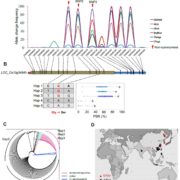
Identification of cold tolerance genes and a functional allele that confers cold tolerance ($) (Plant Physiol.)
Plant Science Research WeeklyXiao et al. used 1,033 rice accessions for GWAS to identify QTLs associated with cold tolerance. In general, japonica-type varieties showed greater cold tolerance than indica types. The authors identified many QTLs for cold tolerance at the seedling and booting (initiation of panicles) stages. They…

A plant phytosulfokine peptide initiates auxin-dependent immunity through cytosolic Ca2+ signaling (Plant Cell)
Plant Science Research WeeklyPlants are exposed to a wide variety of biotic stressors such as herbivores and microbial pathogens. Thus, they have developed a sophisticated response system which involves different signal molecules and accurate signaling pathway responses. Among them, phytosulfokine (PSK), a disulfated pentapeptide,…
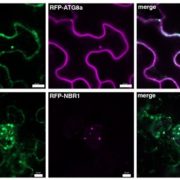
Bacteria exploit autophagy for proteasome degradation and enhanced virulence in plants (Plant Cell)
Blog, Plant Science Research WeeklyAutophagy has been defined as non-specific self-eating to obtain material that will be used for key processes within the cell. Even through authophagy has been demonstrated to be very important, its role during plant-bacteria interactions is not well known. Üstün et al. examined interactions between…
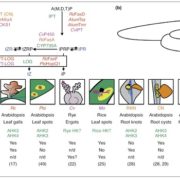
Review: Same tune, different song — cytokinins as virulence factors in plant–pathogen interactions? (COPB)
Plant Science Research WeeklyMany pathogens produce virulence factors that improve their pathogenicity, including in some cases compounds produced by the host, such as the hormone cytokinin. Spallek et al. review the various plant pathogens — spanning from bacteria to parasitic plants — that use cytokinins as virulence factors;…
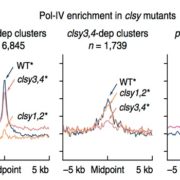
Stay CLASSY: Control of locus-specific de novo DNA methylation by the CLASSY family ($) (Nature Genet.)
Plant Science Research WeeklyDNA methylation is fundamental for genome function and stability, including regulation of gene expression, silencing of transposable elements and control of recombination. While the processes involved in maintenance of DNA methylation are generally well understood, the factors required for locus-specific…

Integration of two RAB5 groups during endosomal transport in plants (OA) (eLIFE)
Plant Science Research WeeklyRAB proteins are membrane-anchored proteins that coordinate and regulate vesicle trafficking. Plants contain two group of RAB5 proteins, canonical (ARA7, RHA1) and plant-specific (ARA6), which share a common activator, VPS9A (Vacuolar Protein Sorting 9A). Ito et al. used an activated (GTP-bound) version…
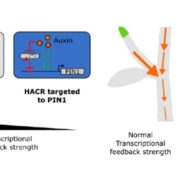
Synthetic hormone-responsive transcription factors can monitor and re-program plant development (eLIFE)
Plant Science Research WeeklyKhakhar et al. have developed a system by which genes can be made exquisitely responsive to specific hormones. They take advantage of the specificity of the guide DNA/Cas9 system, but use a deactivated (dCas9) enzyme that targets but does not cleave the target DNA. By fusing dCAS9 to a hormone-responsive…
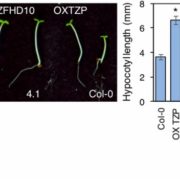
Regulation of Arabidopsis hypocotyl growth by transcriptional regulators (PNAS)
Plant Science Research WeeklyThe integration of light-based environmental signals with photoreceptors and transcriptional regulators is essential for coordinating plant growth, development and energy production. One such integrator of light and signaling components is the Arabidopsis thaliana TANDEM ZINC-FINGER PLUS3 (TZP). TZP…

Sulfur partitioning between glutathione and protein synthesis determines plant growth (Plant Physiol.)
Plant Science Research WeeklySulfur is incorporated into the amino acid cysteine (Cys) and also the reactive-oxygen scavenger glutathione (GSH). Speiser et al. investigated the effect of restricting both Cys and glutathione production through a double-mutant analysis in Arabidopsis; sir1-1 is a slow-growing sulfite-reductase deficient…

